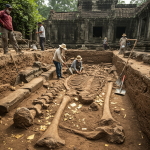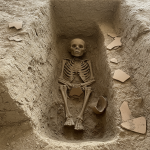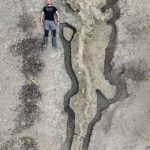The Pilauco Footprints: A Glimpse into Early Human Migration
The Pilauco Footprints: A Glimpse into Early Human Migration
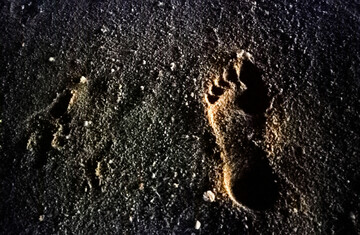
The discovery of the Pilauco Footprints in southern Chile, dating back to approximately 15,500 BCE, represents a groundbreaking archaeological find with profound implications for our understanding of early human migration in the Americas. These ancient footprints, found in a sediment layer in the Osorno region, predate the well-known Clovis culture, which was traditionally considered one of the earliest indicators of human presence in North America. This discovery challenges established theories regarding when and how the first humans arrived in the Americas.
Discovery and Archaeological Significance
The Pilauco site was first identified in the late 20th century, but it wasn’t until recent excavations that researchers uncovered the well-preserved human footprints. The sedimentary layer in which they were found has been radiocarbon-dated to approximately 15,500 BCE, making these footprints some of the oldest direct evidence of human presence in South America.
Prior to this discovery, the dominant theory held that early humans migrated from Asia into North America via the Bering Land Bridge and gradually moved southward, with the Clovis culture (circa 13,000 BCE) marking one of the first major human settlements. The Pilauco Footprints suggest that human migration into the Americas may have occurred much earlier and possibly via different routes than previously assumed.
Implications for Early Human Migration

The existence of these ancient footprints raises crucial questions about the identity of the individuals who left them and their way of life. The lack of associated tools or artifacts at the site makes it difficult to determine their specific cultural affiliations. However, given their age, the individuals who made these footprints were likely hunter-gatherers who relied on the abundant natural resources of the region.
The discovery also contributes to the ongoing debate about the possible migration routes of early humans into South America. Theories include a coastal migration route, where early peoples may have traveled along the Pacific coastline by boat, or an inland route that required navigating through ice-free corridors during the last Ice Age. The Pilauco Footprints provide crucial evidence that human settlement in South America occurred earlier than traditionally believed, but much remains to be understood about how these populations arrived and adapted to their environments.
Environmental and Geological Context
The sediment layers at Pilauco contain not only human footprints but also the remains of extinct megafauna, such as gomphotheres (an ancient relative of elephants) and giant sloths, suggesting that humans coexisted with these creatures. This supports the idea that early inhabitants of the region may have been involved in hunting or scavenging activities.
The preservation of the footprints was possible due to specific geological conditions. The soft ground, likely damp from nearby water sources, allowed for deep impressions, which were later covered and preserved by subsequent sediment deposits. This unique preservation has enabled researchers to analyze the footprints in detail, providing insights into the gait, weight, and movement patterns of the individuals who left them.
Controversies and Ongoing Research
Like many archaeological discoveries that challenge established paradigms, the Pilauco Footprints have sparked debates within the scientific community. Some researchers question the dating methods, while others argue that alternative explanations—such as geological processes—could account for the impressions. However, repeated studies and independent verifications have reinforced the validity of the findings, solidifying their place in the discussion on early human migration.
Ongoing research continues at the site, with scientists using advanced imaging and dating techniques to further analyze the footprints and surrounding sediments. Additional discoveries may help clarify whether the Pilauco inhabitants were part of a broader, earlier migration wave into the Americas, or if they represent an isolated population that reached South America independently.
Legacy and Historical Significance
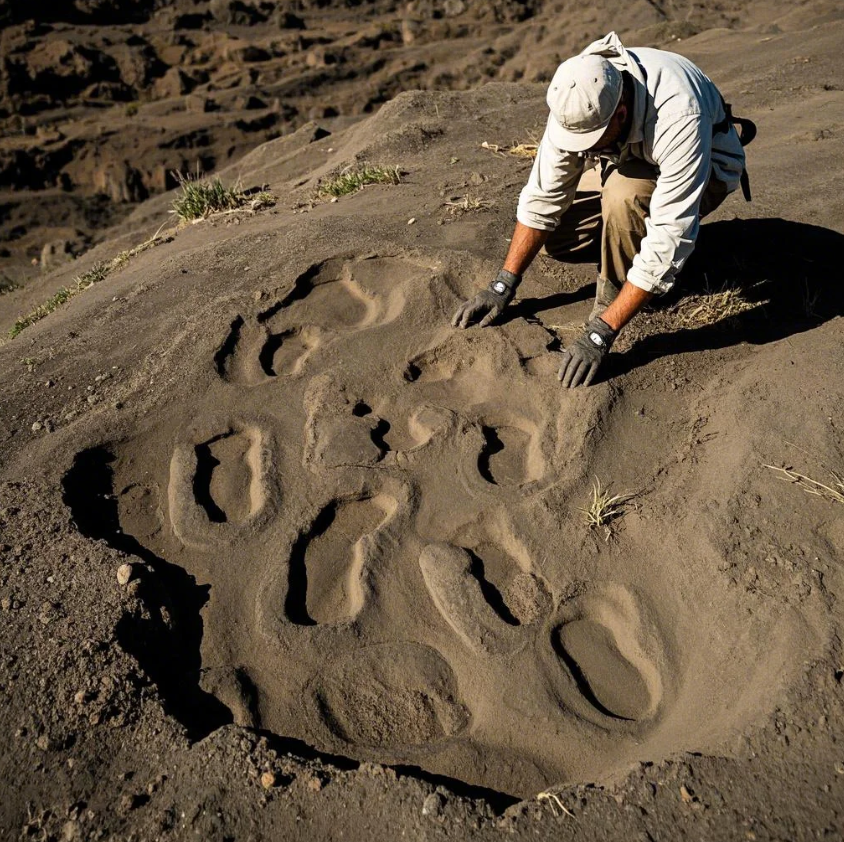
The Pilauco Footprints offer a unique glimpse into the lives of some of the earliest known inhabitants of the Americas. They serve as a tangible link to a distant past, challenging long-held theories and expanding our understanding of human migration and adaptation.
Today, the site stands as a testament to the rich and complex history of human habitation in South America. As archaeological methods continue to advance, further revelations about the people who left these footprints may emerge, shedding light on their origins, cultural practices, and interactions with the prehistoric world.
#PilaucoFootprints #AncientMystery #ChileanSecrets #AncientTracks #ArchaeologyMigration #LostCivilization #CulturalHeritage #UnearthedHistory
